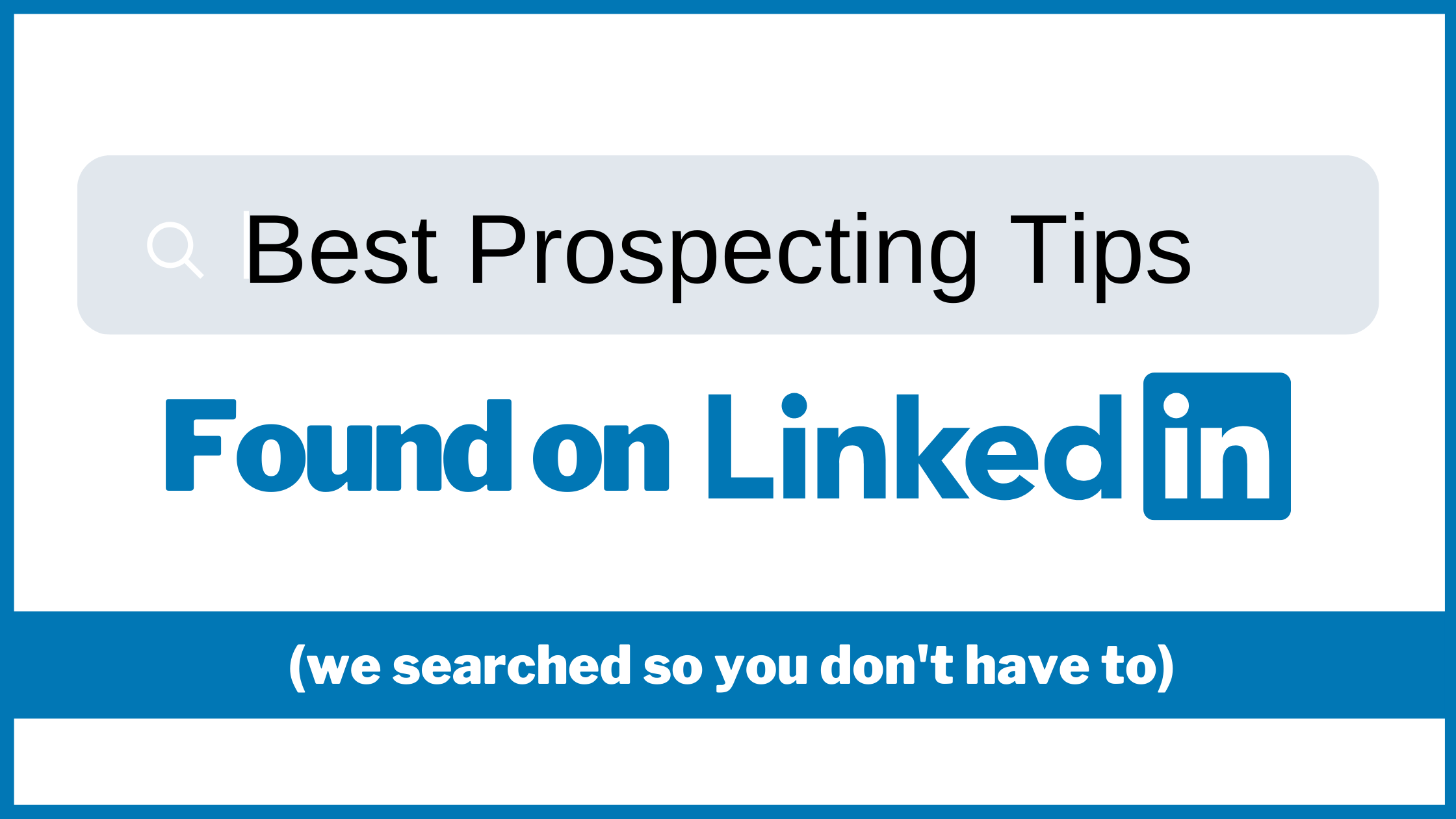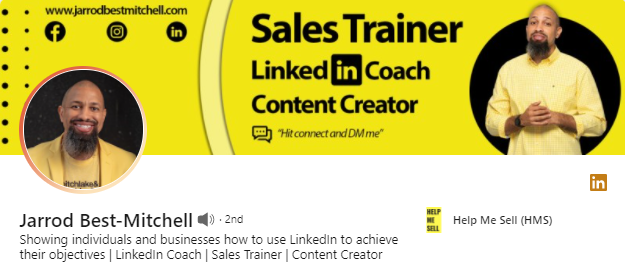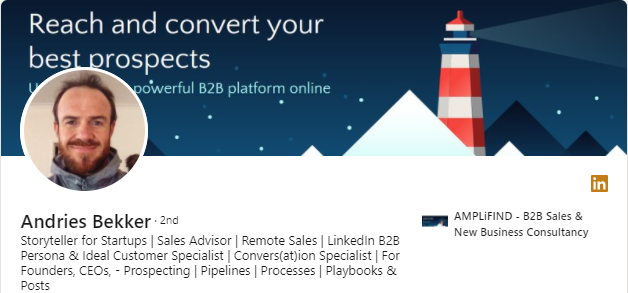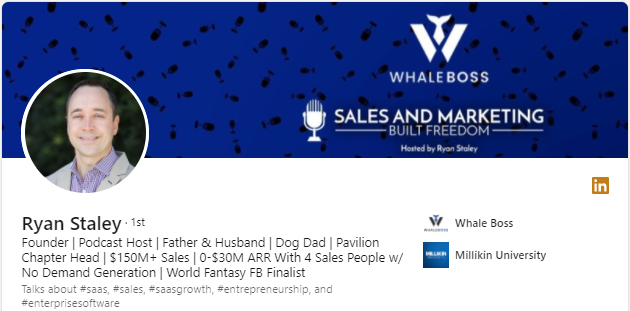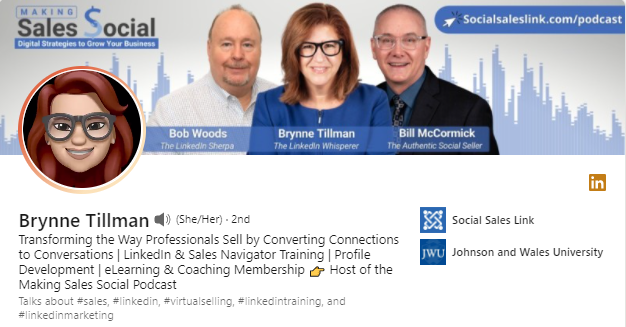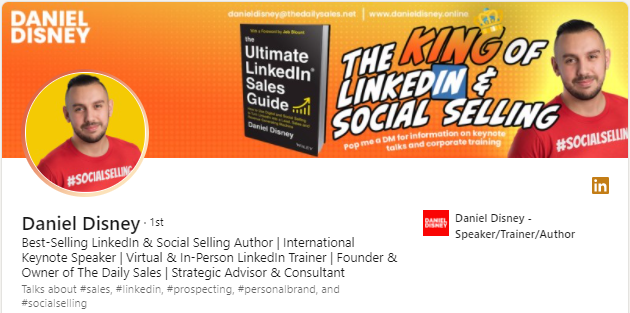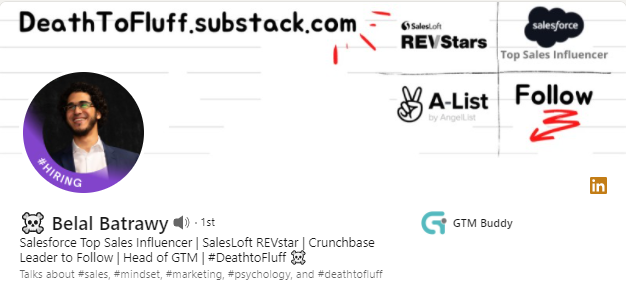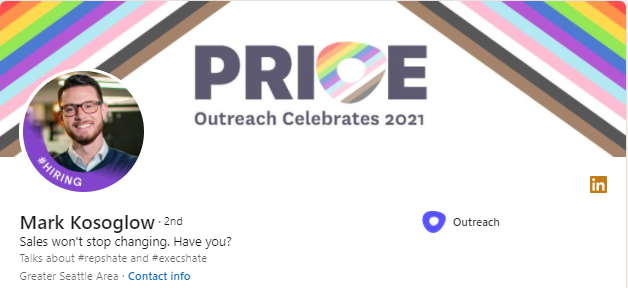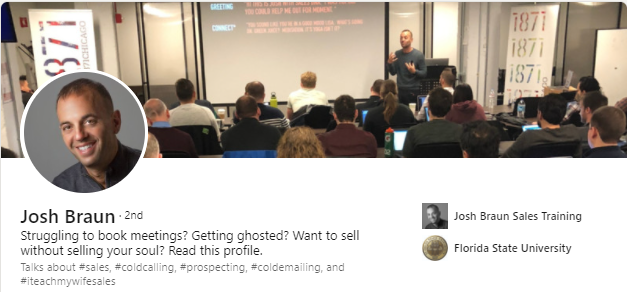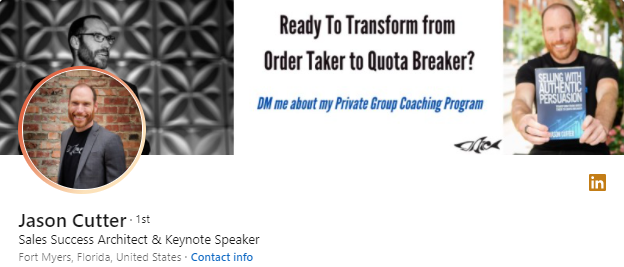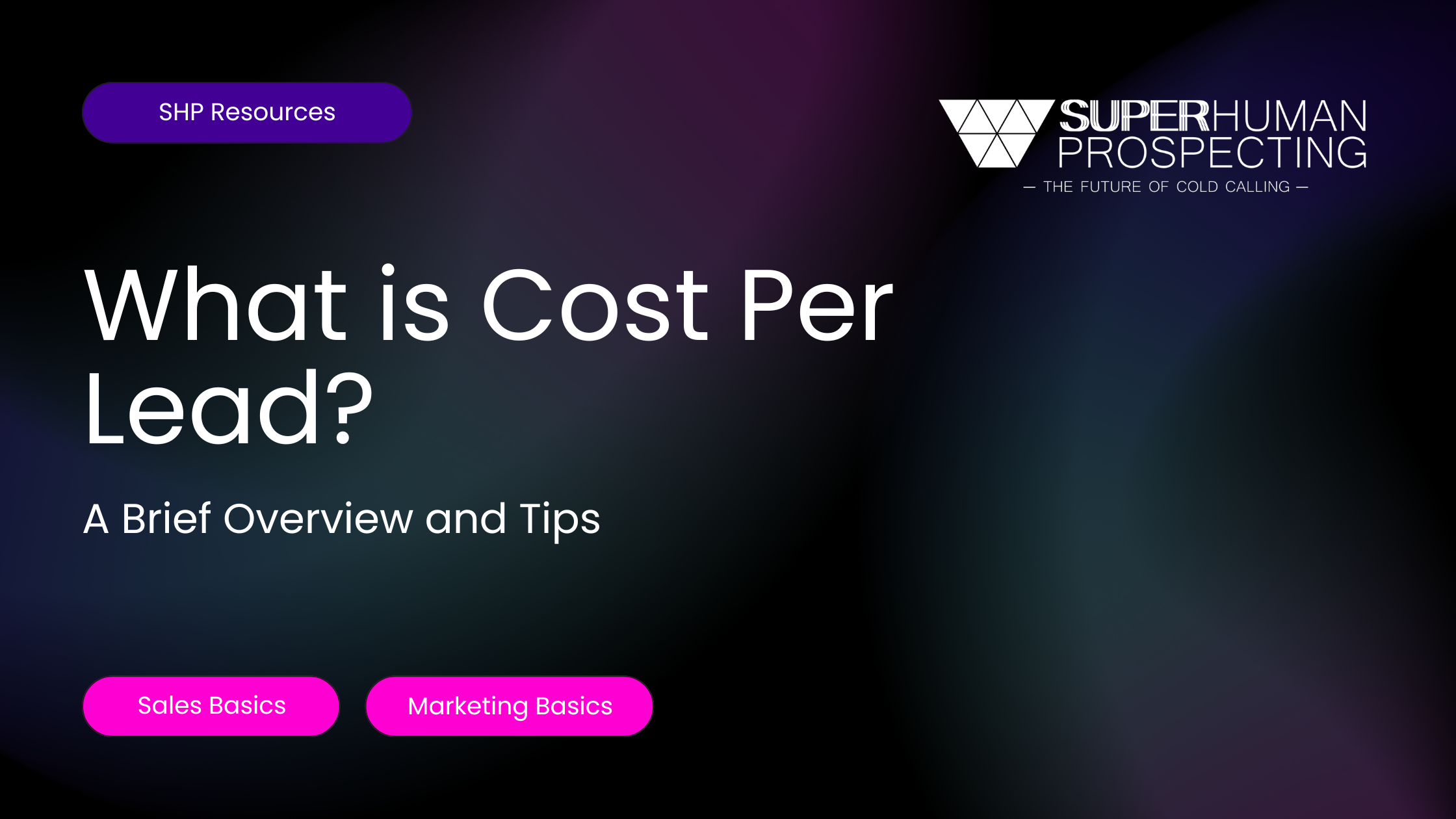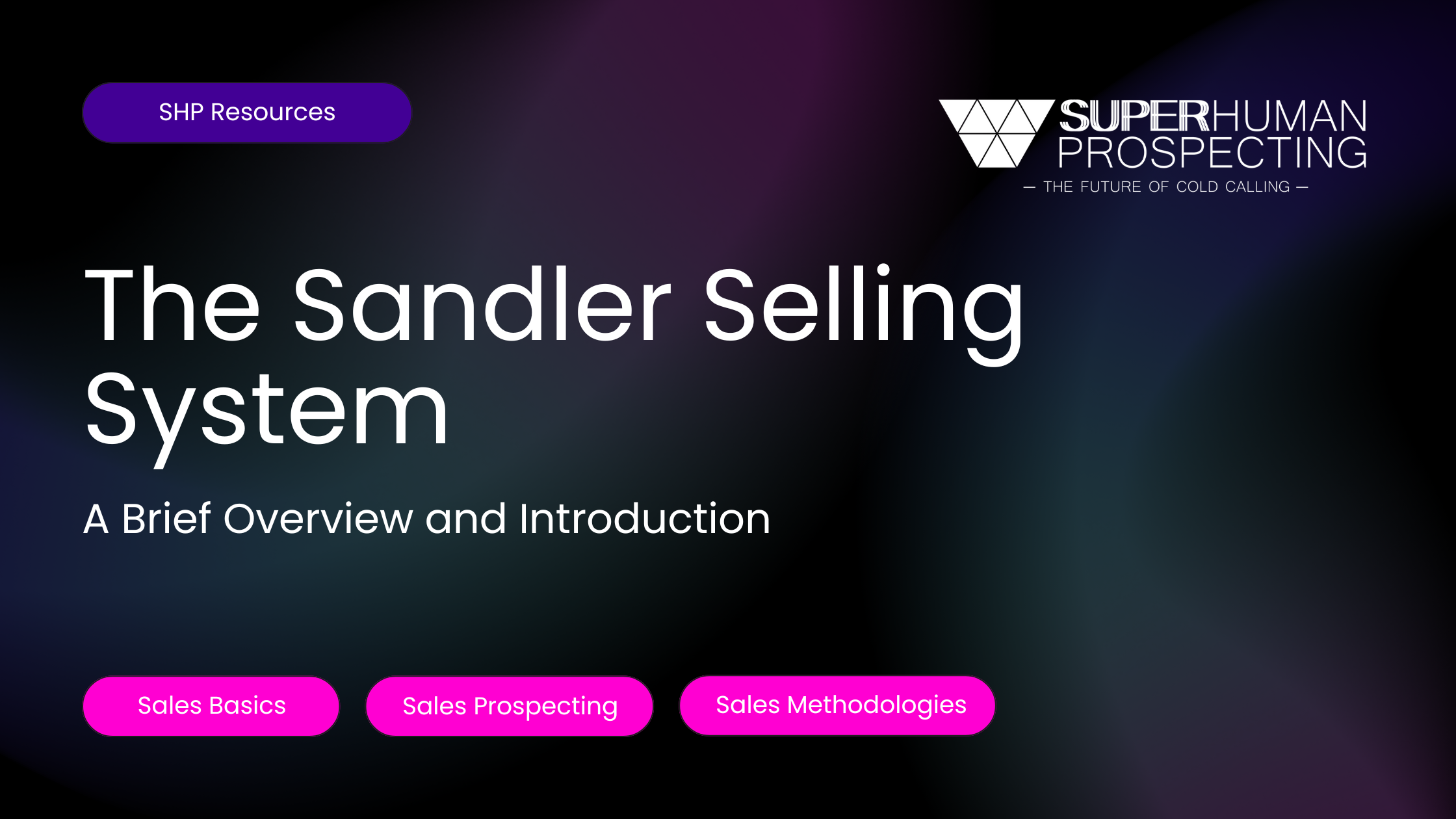LinkedIn’s mission is simple –
“Connect the world’s professionals to make them more productive and successful.”
They aren’t the largest platform, but with 750+ million members, 55+ million companies, and over 1 billion interactions each month, they are one of the oldest (and most trusted) social networking platforms still used today.
Log on and you’ll discover a wide variety of professionals engaging with their communities, sharing knowledge, news, techniques, and processes that can help take your career to the next level.
But with so many members, it can be difficult to discover people who inspire us and content that teaches us something new. If your timeline is looking a little lackluster in the prospecting department, we can help you cut through the noise and find those little nuggets of gold.
Evaluate Your Ideal Target Audience:
Seth Godin once said, “Everyone is not your audience.”
Don’t waste your valuable time and resources trying to reach everyone. If you want to be successful in prospecting you need to define and evaluate your ideal client profile (ICP).
Think: Who are your best customers? What do they have in common? How can you target more companies like them? How can you maximize those efforts?
Jarrod Says: “Having an ICP and Buyer Personas are critical to your business’ success.
- It helps reduce your sales cycle.
- It gives you the ability to niche aka find more people that want your product and service.
- And most important, having and using your ICP and BP in the sales process allow you to have better conversations because the persons you are speaking to is actually the right buyer.
If you feel like you’re forcing someone to buy your product or service, chances are they might be the wrong type of customer. That forcing is what is making you feel “icky” or “salesy” when you’re selling. SO USE YOUR Ideal Client Profiles and Buyer Personas!”
Jarrod’s Tip for Determining ICP:
1. Create an Existing Database: Review past sales, your products sold, and define average transaction value.
2. Look at Your Competitors: Who engages with their content? What industry are they in? Where do they operate? What size of business? How many employees?
3. Evaluate Lead / Product / Service: Which is your highest volume? Which is your highest value?
4. Budget: Know your ROI, average market prices, and what your customers are willing to spend.
Andries Says: “Focusing on how to unlock 10 clients is more important than trying to sell to a 100. Once you have those 10 clients on board, learn as much as you can…
How they are /would be using your product?
Get their feedback – how much would they pay for it? What other options do they have?
Who did you intend to build your product for, and are they the most active users currently?
Map what gets your clients to the point of purchasing. Not only will it allow you to verify actual steps taken, but it will help you gauge uniformity in their actions and decision-making.
Worst case scenario, your ICP is not yet defined – it will take you back to the drawing board to figure out who your target market really is. Especially, if you are looking for funding. VCs need to know what the TAM is before they invest, and finding your ICP is key to finding Product-Market Fit.”
Ryan Says: “What if I told you that focusing only on ICP is wrong….Terribly wrong
It’s only a small part of the puzzle, granted its directionally correct. But there is something missing. If 80% of your revenue comes from 20% of your clients, why focus on them with the same amount of effort?
If 1 customer has been paying you $1m for 10 years imagine what would happen to your business if you had 2, 3, or 4? For some companies there is ONLY ½ of the buying market that existed in 2019 so wouldn’t it make sense to look at things differently?
Therein, is born the Perfect Customer Profile.
Create yours by identifying the following:
1. Your top 3 revenue customers in 2020
2. The vertical, revenue, and company size
3. Stack rank the titles for each one (C-level, coach, and champion)
4. Identify the situation(growing, shrinking, merging, etc.)
5. Identify the trigger event that caused them to buy
ICP is dead as a standard because of the ability to leverage data to take things to the next level, do you agree or disagree?”
Get to REALLY Know Your Prospects
Evaluating your prospect’s wants, needs, position, and role responsibilities can help you better solve their problems. This is especially important for B2B companies looking to enhance their messaging and sales scripts.
You should know how your solution benefits them and their organization. Speak directly to the pain points you know you can solve, but be sure to listen for any other issues they may have. The root causes of their problems may not be identified yet, which can lead you to the best solution.
Brynne Says: “Is your discovery conversation valuable to your prospects or is its purpose simply for you to gather information so you can sell to them? If your prospect feels that your discovery conversation is a transaction, they see you as a sales rep and not a trusted advisor.”
Her pro tip: “Leveraging social proximity into targeted accounts is the best way to gain access to stakeholders with the highest level of credibility. So social proximity, at its core, is mapping out pathways into decision-makers and influencers based on our existing network.
Once we determine who we know that knows who we want to know we can get introductions or permission to name drop leading to meaningful conversations on a consistent basis.”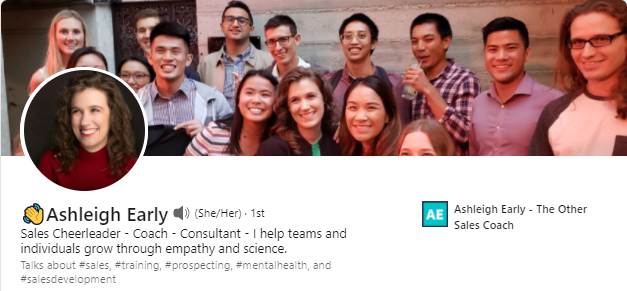
Ashleigh Says: “How well do you know your prospect? Can you name any certifications they typically have? How many years of experience do they need for their role? What about what role they want AFTER this one?
Personas are more than understanding your prospect’s pain points and where they get their information from…you have to be able to crawl in their skin for a bit and see the world through their eyes. It’s about understanding their past, present, and goals for the future. THEN you can have a conversation about how your product can help get them there.
Especially, if you are selling something new. No one knows the answers if you’re building from scratch – they have educated guesses, but they don’t KNOW. I know – I help other people do this every day.
Now, I’m doing it for myself and it’s like learning to walk again. I have to re-learn what to listen for in my prospect responses. I have to re-learn how to do discovery and what priorities to tie my product to. I have to re-learn how my new buyers…buy.
If you have a deal go sideways, learning something new from it. Each time I learned something new and grew – no ego, just growth. #ProTip – write down what you learn and why you lost (even if only you see it). Keep at it – especially if you’re building from scratch. It does get better as long as you focus on LEARNING.
Daniel Says: “It is important to do your homework and dig a little deeper to learn more about your prospects.
Read through their Linkedin profiles. Read through their activity, or their website and look for something better to personalize your conversation. You can’t “hack” personalization. You can’t streamline it. You can’t take shortcuts.
But it’s worth the time and the effort. Do it right and you’ll get more connection requests accepted, you’ll get more replies to messages and you’ll create more opportunities
Work Smarter, Not Harder
There are many prospecting tools, tips, and techniques out there that can help you work smarter, not harder. In a 2020 LinkedIn survey, 73% of salespeople said they use technology to close more deals while 97% said that technology is either ‘important’ or ‘very important’ to their sales process.
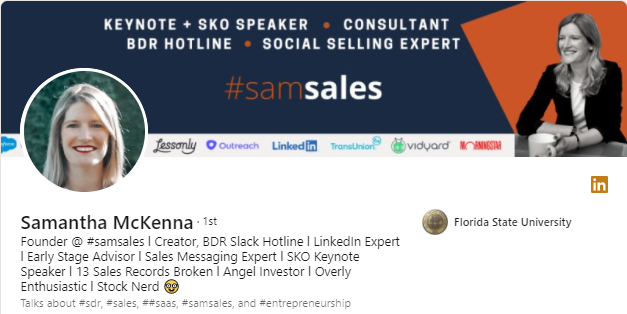
Sam Says: “I’m all about shortcuts and working smart. What’s one of the easiest tricks in my book?
Proactively asking for an intro.
Here’s an actionable thing you can do today for meetings: Write down five people that know you and/or the work your company does well. Open up LinkedIn Sales Navigator and click on their profile. Click on their 500 connections. Filter like a champ. Find at least five “leads”.
Make the direct ask:
“I took a quick look at your LinkedIn connections and found a few people that I think would benefit from what we do – any chance you would you be up for introducing us? No pressure whatsoever- appreciate you considering!”
Let’s say only two of those intros pan out to meetings – you will work infinitely less hard for two meetings AND you’ll amp your credibility because the meeting came from a trusted source of theirs. Rinse/repeat every week.”
Belal Says: “Using the number of emails or calls a seller does to judge their work ethic and attitude leads to sellers faking dials to look busy. This kind of dashboard management stopped working when salespeople could send +1,000 emails a day effortlessly from widespread sales enablement tools.”
In order to build a world class sales team in today’s environment, leaders need to work smarter, not harder. This means:
- Aligning all sales activity to the Buyer’s Journey, making sure prospects can progress with the least amount of friction from Unaware to Decision.
- Measuring meaningful metrics like email/call sentiment, TAM vs ICP pipeline, disqualification rate, and pipeline velocity.
- Implementing productivity sprints because science has proven the human mind can only concentrate for up to 2 hours at a time before needing a break.
- Chunking the sales process and training on each part incrementally and with personalized feedback.
- Codifying career growth into a checklist to put the onus on salespeople for their promotions and removing manager biases.
Your team performance should never be quantified with vanity metrics. “If you do these 5 things in your sales team, you’re building world class sales structure.”
Don’t Fear Rejection While Prospecting
Rejection happens in sales. How you bounce back after facing that rejection says everything. According to Hubspot, 60% of customers say no four times before saying yes, whereas 48% of salespeople never even make a single follow-up attempt.
Don’t let the fear of rejection stop you from making that next call.
Mark Says: “Lots of people complain about how they were prospected.
It was automated. There was no personalization. I felt like a number, not a person. I knew I was in a sequence. I don’t respond to cold calls. Don’t pitch me on a LinkedIn. Don’t leave a VM. Dozens more.
We’ve all felt wronged when someone didn’t sell us the way we like to be sold. However, our personal opinion, while very important for getting results from ourselves, has little impact on getting results from others. I’ve gotten replies to the exact same email that ranged from “f*** off!!” to “this is the best email I’ve ever gotten.”
I’ve gotten answers to cold calls where I said the same thing a week apart and the person booked a meeting the second time after hanging up on me the first. I’ve had people tell me “quit commenting on my content…what do you want” and “don’t pitch me on LinkedIn — this isn’t the place for that” in the same 24 hour period.
There’s never been a hard working, empathetic, knowledgeable sales professional that hasn’t upset someone with even the most well-intentioned, well-researched, relevant, timely outreach.
Sales Professionals, take posts on LinkedIn that express someone’s opinion about how to be sold to with a grain of salt. Look at what the data says, and do that. It won’t be the right approach for some people. Guaranteed.
But, if you try to always fire the silver bullets, the shots will be so expensive (in time and resources) you’ll never shoot enough to win…besides, silver bullets only work better on werewolves, and how many werewolves are there out there?”
Josh Says: “You spend 15 minutes writing a killer personalized email. No response.
You feel rejected. Why?
When you attach your self-worth to a response (extrinsic motivation), you feel rejected, worried, or anxious when you don’t get a response. We know from neuroscience that the same areas of our brain become activated when we experience rejection as when we experience physical pain. That’s why call rejection feels like quicksand. You sink even deeper than you felt before. Your intent (getting a response) affects how you feel. Same intent. Same feelings.
If this sounds like you, I have some good news. You can change with one simple shift. Change your intent. Detach from the outcome. Why? You don’t control outcomes. You don’t control when or if prospects respond.
Focusing on things you don’t control is a recipe for being unhappy and rejected. Focus only on things you do control. Like writing more emails. Like studying copywriting to write better emails. The process, not the outcome. Fishing, not catching. The joy of selling happens when you let go of things you don’t control.
Different intent. Different feelings.”
Create Long-Term Business Relationships:
More than ever, sales is about creating a network of more long-term business relationships. It’s important that your prospects gain trust in you, your company/ brand, and your offering.
Taking time to cultivate these relationships and actually listening to your clients will help you develop a more effective and reslient sales strategy.
Anthony Says: “Great salespeople treat their prospects with great respect, getting to the point of their communication quickly, and creating interest by explaining how they might be able to create value for the prospect and their company. They have a professional, consultative approach that generates trust, regardless of the medium.
When they prospect, great salespeople never ask for a greater commitment than they have earned the right to request. They never ask for more of a commitment than the opportunity to learn about the prospect’s business in order to determine whether or not they may be able to create something of value together.
They focus only on the outcome of generating that opportunity to learn, never conducting a needs analysis when they intend to schedule an appointment, and never presenting their company and its solutions during a prospecting encounter.
Jason Says: “When you are flexible, show attention to the details that are important to your customer, and have a general attitude of care, you are building trust that will equal more success.”
He continues in another post, “In the words of my very wise Grandma, “Two ears, one mouth.” This will build rapport, empathy, and people will trust you with that.
You can still have a level of control over the sales conversation while maintaining that harmonious relationship where your prospective client/customers feel like you understand them.

